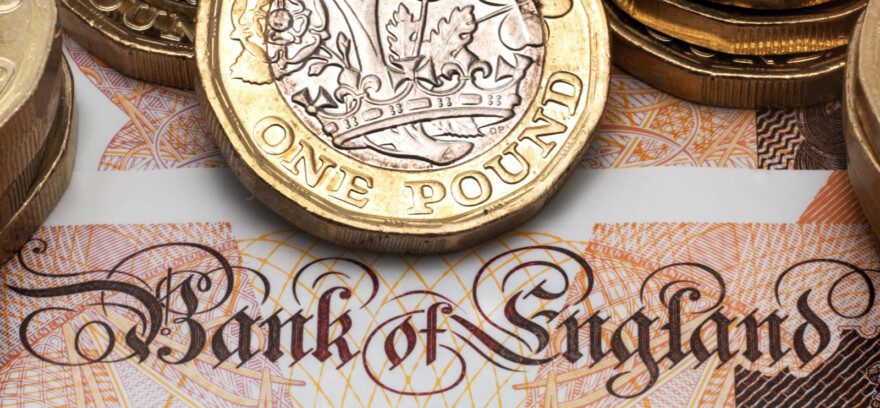UK markets edged up this week, with the FTSE 100 Index rising by 0.82% to trade at 8,245 points at the time of writing.
UK inflation hit the Bank of England’s 2% target in May for the first time in three years, marking a milestone for the UK economy after the worst inflationary upsurge in a generation.
The last time the Bank of England hit its 2% inflation target was in July 2021. The data from the Office for National Statistics was in line with economists’ forecasts and means that headline inflation in the UK is now below that of the US and the Eurozone. However, higher than expected rises in prices for services caused investors to reduce their bets on interest rate cuts.
May’s consumer price index (CPI) inflation figure was down from April’s rate of 2.3%, as price rises slowed for products such as food, non-alcoholic beverages and furniture. Services inflation dropped to 5.7% in May, down from 5.9% a month before, but above the Reuters poll forecast of 5.5%, as prices rose for airfares and accommodation.
Core inflation, excluding food and energy, decreased to 3.5% in May from April’s 3.9%, though it remains relatively high. Economists cautioned that the decline in CPI inflation may be short-lived once the impact of lower energy prices fades.
The Bank of England anticipated CPI inflation would climb later this year, nearing 2.6% in the final quarter. The UK central bank held interest rates at 5.25% in its latest meeting, but hinted at a potential cut as soon as August, leading investors to bet on a summer rate reduction.
The Monetary Policy Committee’s decision, expected seven-to-two, kept interest rates at a 16-year high. Meanwhile, UK retail sales rebounded by 2.9% month-on-month in May, recovering from a revised 1.8% decline in April, exceeding expectations of a 1.8% increase, driven by improved footfall, better weather and promotional impacts.
Commodity markets
In the commodity markets, Brent crude futures traded around $85 per barrel on Friday and are set for a weekly rise, as tensions escalate in the Middle east and JP Morgan forecast that Brent will hit $90 on summer fuel demand by September.
Israeli troops, backed by tanks, warplanes and drones, moved further into the Gaza strip of Rafah on Wednesday, killing eight people, residents and Palestinian medics said. Tensions escalated further, with Israel and the Iran backed militia group Hezbollah threating war.
Israel’s military said on Tuesday in a statement on social media that “operational plans for an offensive in Lebanon were approved and validated”. On Wednesday, Hezbollah leader Hassan Nasrallah warned Israel in a televised speech that the militant would fight with “no rules and with no red lines” if war breaks out. Escalating war in the Middle East supports prices as a wider conflict could disrupt oil supply from the region.
Gold Prices traded around $2,365 on Friday, and are set for a weekly rise, after recent weak US economic data raised expectations of interest rate cuts from the Federal Reserve later this year, while uncertainty surrounding multiple elections globally also lent support.
US Equity markets
US equity futures fell on Friday, following a mixed session for major averages, driven by profit-taking in mega-cap technology stocks. Thursday saw the Dow Jones Industrial Average rise 0.77%, the S&P 500 drop 0.25%, and the Nasdaq Composite fall 0.79%.
US retail sales rose by just 0.1% in May and data for April was downwardly revised to a drop of 0.2%, suggesting that economic activity remained lacklustre in the second quarter. However, the smaller than expected increase in retail sales reported by the Commerce Department on Tuesday likely exaggerates the slowdown in consumer spending as part of the decline in sales was due to lower petrol prices, which weighed on receipts at service stations.
Despite these figures, inflation and higher US interest rates are challenging consumer resilience, prompting households to prioritise essentials and curtail discretionary spending. Federal Reserve official Adriana Kugler noted that price reductions at major retailers and weaker sales indicate a beginning slowdown in consumer spending, potentially paving the way for interest rate cuts this year. This dovish stance contrasts with recent Fed forecasts of increased inflation, reflecting ongoing concerns about persistent price pressures.
Elsewhere, US Labor Department data from Thursday showed a decrease in initial claims for unemployment benefits last week, though overall benefits rolls climbed to their highest since January the previous week, signaling a cooling job market. Initial claims fell by 5,000 to 238,000 for the week ending 15th June, partially reversing the prior week’s increase. Economists surveyed by Reuters had expected 235,000 claims for the latest week.
Meanwhile, Census Bureau data indicated continued struggles in the housing market due to high Federal Reserve-engineered interest rates. Groundbreaking for new homes and permit applications for future residential projects both fell in May to the lowest levels in about four years.
The information provided in this communication is not advice or a personal recommendation, and you should not make any investment decisions on the basis of it. If you are unsure of whether an investment is right for you, please seek advice. If you choose to invest, your capital may be at risk and the value of an investment may fall as well as rise in value, so you could get back less than you originally invested.
